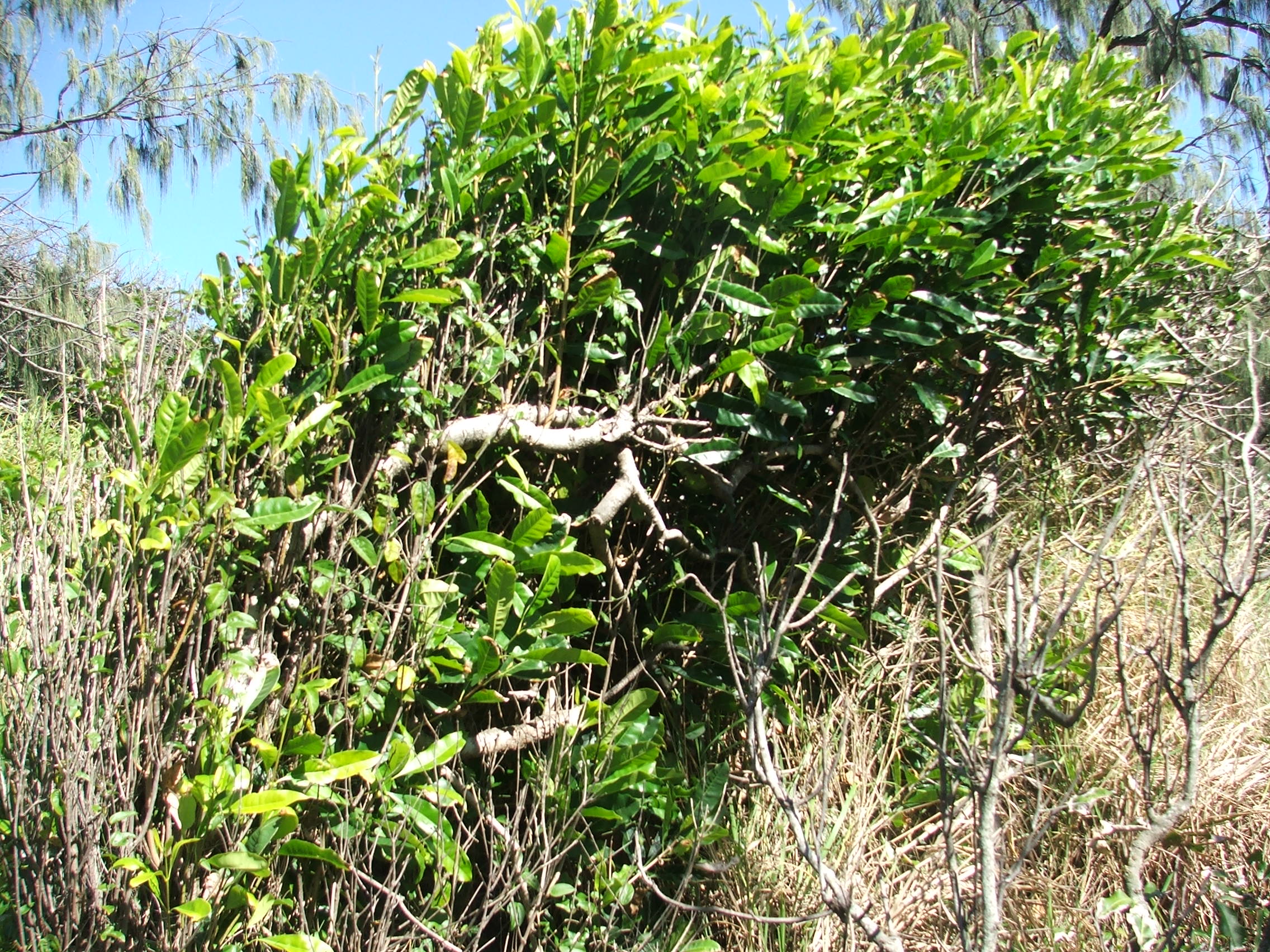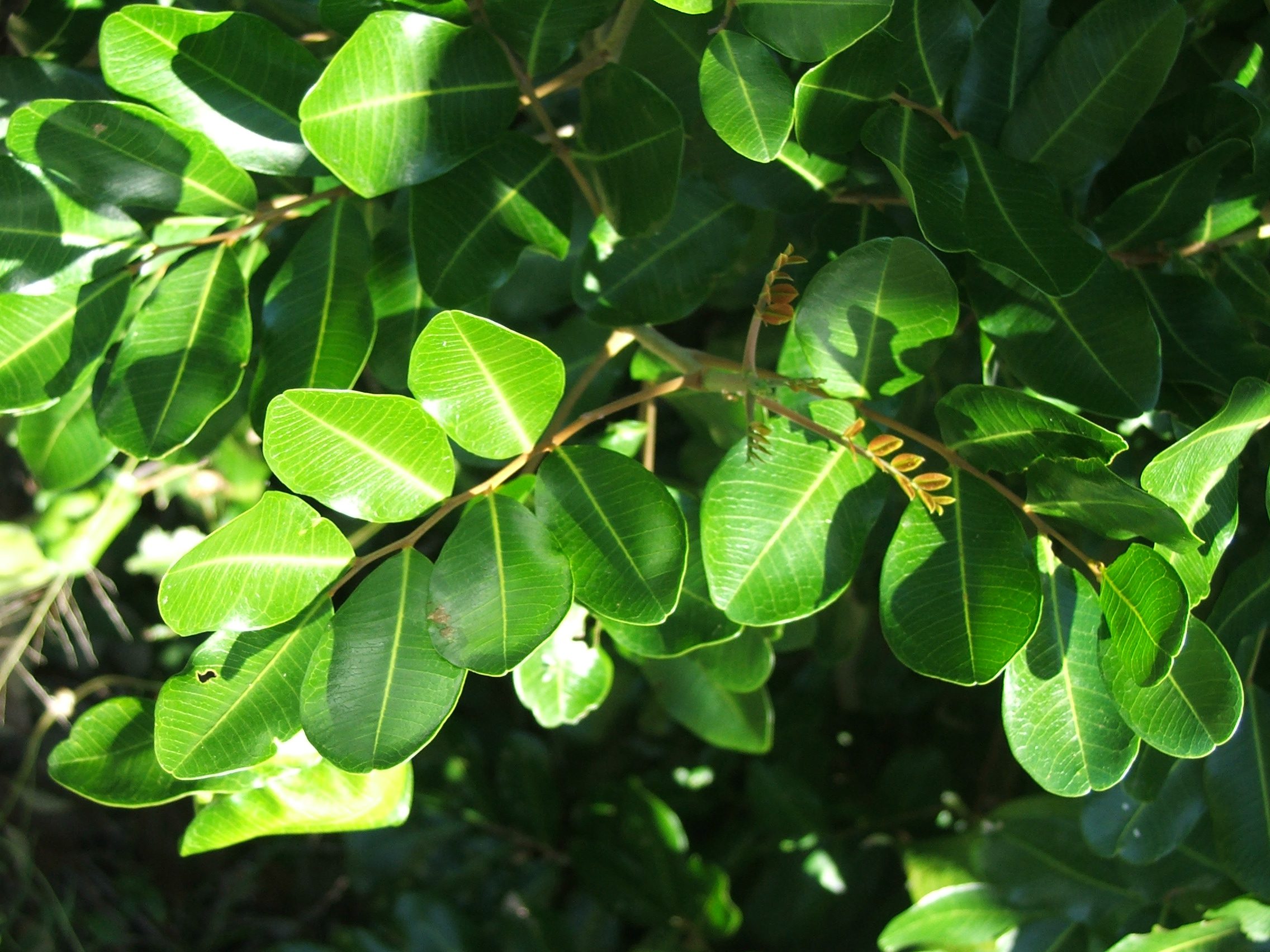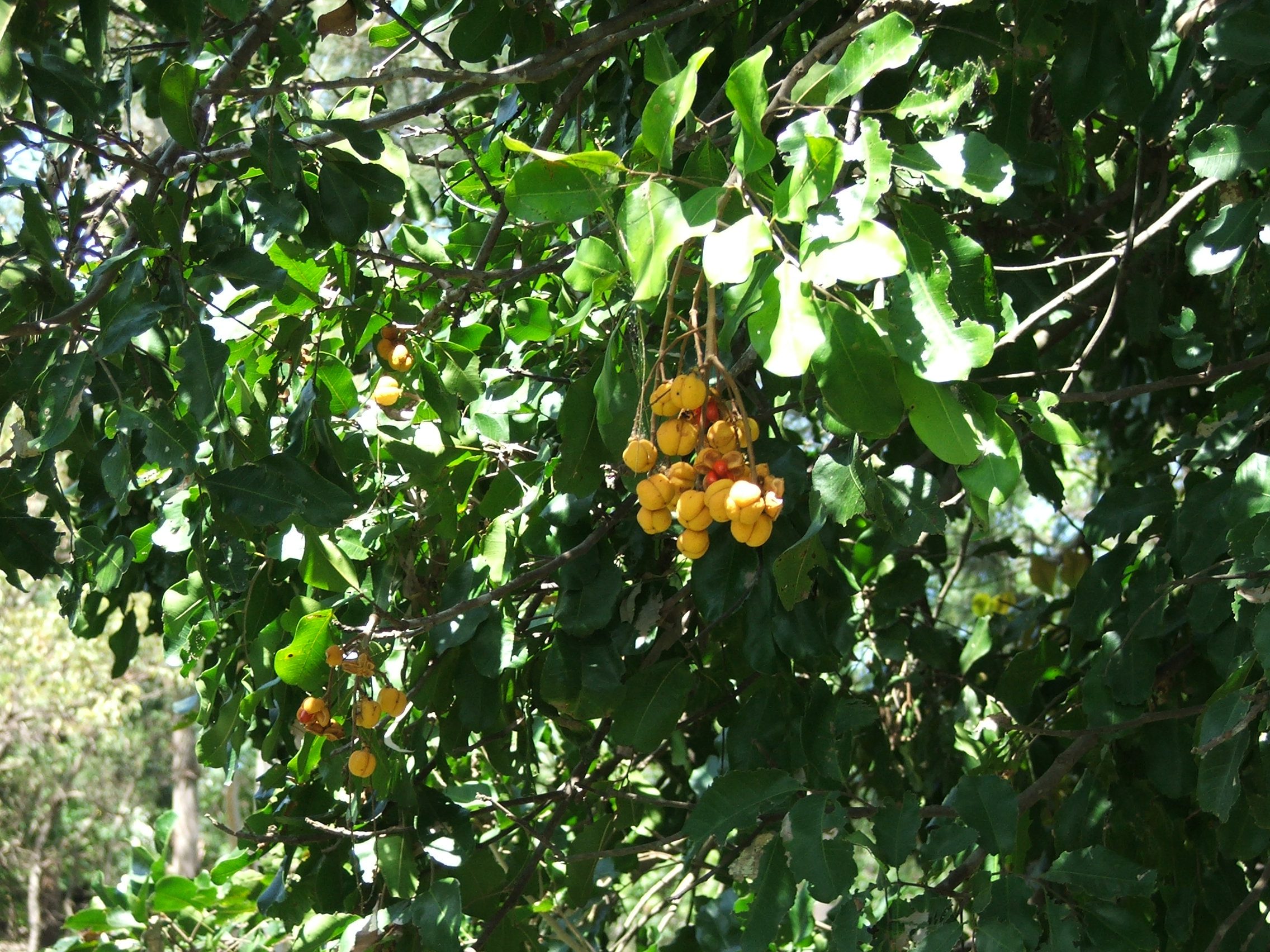Tuckeroo
Cupaniopsis anacardioides, Fam. Sapindaceae




Small to medium tree with a dense canopy of attractive glossy, dark green leaves. The outer bark is grey brown and more or less smooth, although on older trees the bark can become 'moth eaten' in appearance.
| Weed Category: | |
| Weed: | No |
| Form or habit: | Small tree, Med tree |
| Family: | Sapindaceae |
| Leaf: | Alternate, pinnate with four to 12 leaflets, no terminal leaflet. Leaflets are ovate to oblong with a broadly rounded and notched apex, 5-15cm long, margins entire, glossy dark green above, paler and duller below, glabrous. |
| Flower conspicuous: | Conspicuous |
| Flower colour: |
White, Cream |
| Flower description: | Panicles of small white or cream, scented flowers produced near the ends of the branches. Summer to winter. |
| Fruit conspicuous: | Conspicuous |
| Fruit colour: |
Yellow |
| Fruit: | |
| Fruit description: | Smooth, yellow capsules, with three lobes, each of which contain a black seed surrounded by a red orange aril. |
| Habitat: | Coastal dune, gallery (riverine or riparian) forest, littoral rainforest, rainforest, woodland. |
| Distribution | Queensland, New South Wales, Northern Territory, Western Australia, New Guinea, Asia, America. |
| Food source for: | Fruit eaten by the bush rat, fig bird, pied currawong, olive backed oriole, back faced cuckoo shrike and common koel, while the little wattlebird, Lewin's honeyeater, dusky honeyeater and eastern spinebill eat the nectar. Larval food plant of the fiery jewel, shining oak-blue, black spotted flash, dark ciliated blue butterflies and of the moths Homodes bracteigutta and Peritornenta circulatella. Flower buds and/or flowers and fresh leaves are eaten by the larvae of the pale ciliated blue, common pencilled blue, large purple line blue and white banded line blue butterflies, while the larvae of the hairy line blue and glistening blue butterflies concentrate on just the flowers and flower buds.. Larvae of the bright cornelian butterfly feed on the seed while it is inside the fruit. Larvae of the moth Cryptophlebia ombrodelta (macadamia nut borer) bore into the fruit. |
| Toxicity: | No toxicity known |
| Origin: | Australia, New Guinea, Asia, America. |
| Notes: | Most soils and aspects are suitable. Used as street tree in some areas. Grow from fresh seed, soak seed prior to sowing to kill caterpillars that may be present. May take a month of two to germinate. Difficult to store the seed. The aril of ripe fruit was apparently eaten by Aborigines. The timber is tough, fine grained and light pink. |
| Information sources: | Melzer R. & Plumb J. (2007) Plants of Capricornia. |



